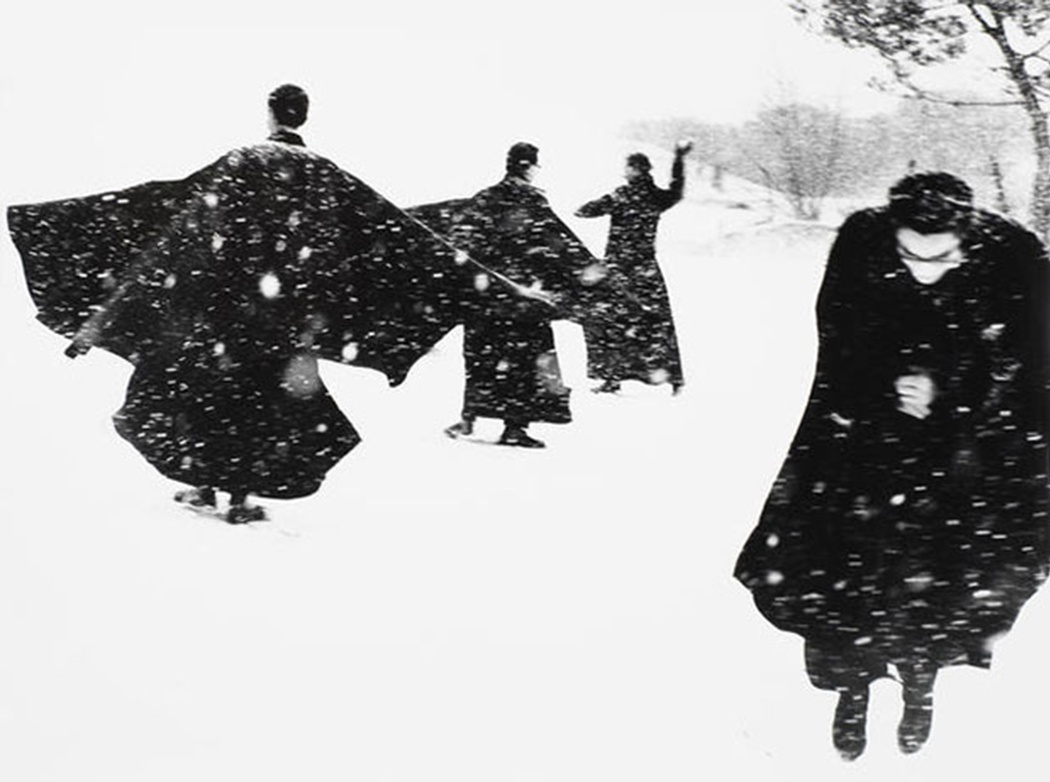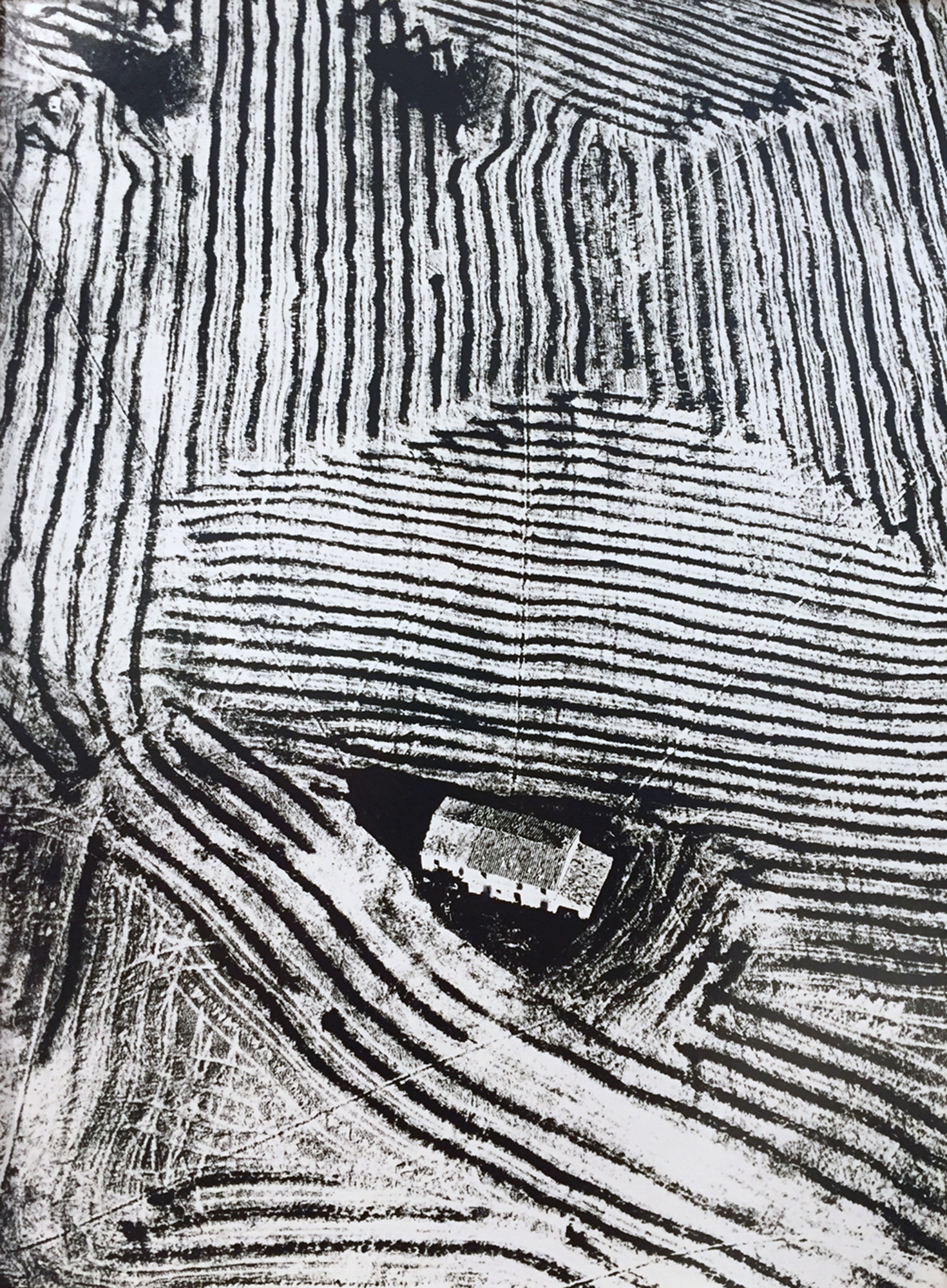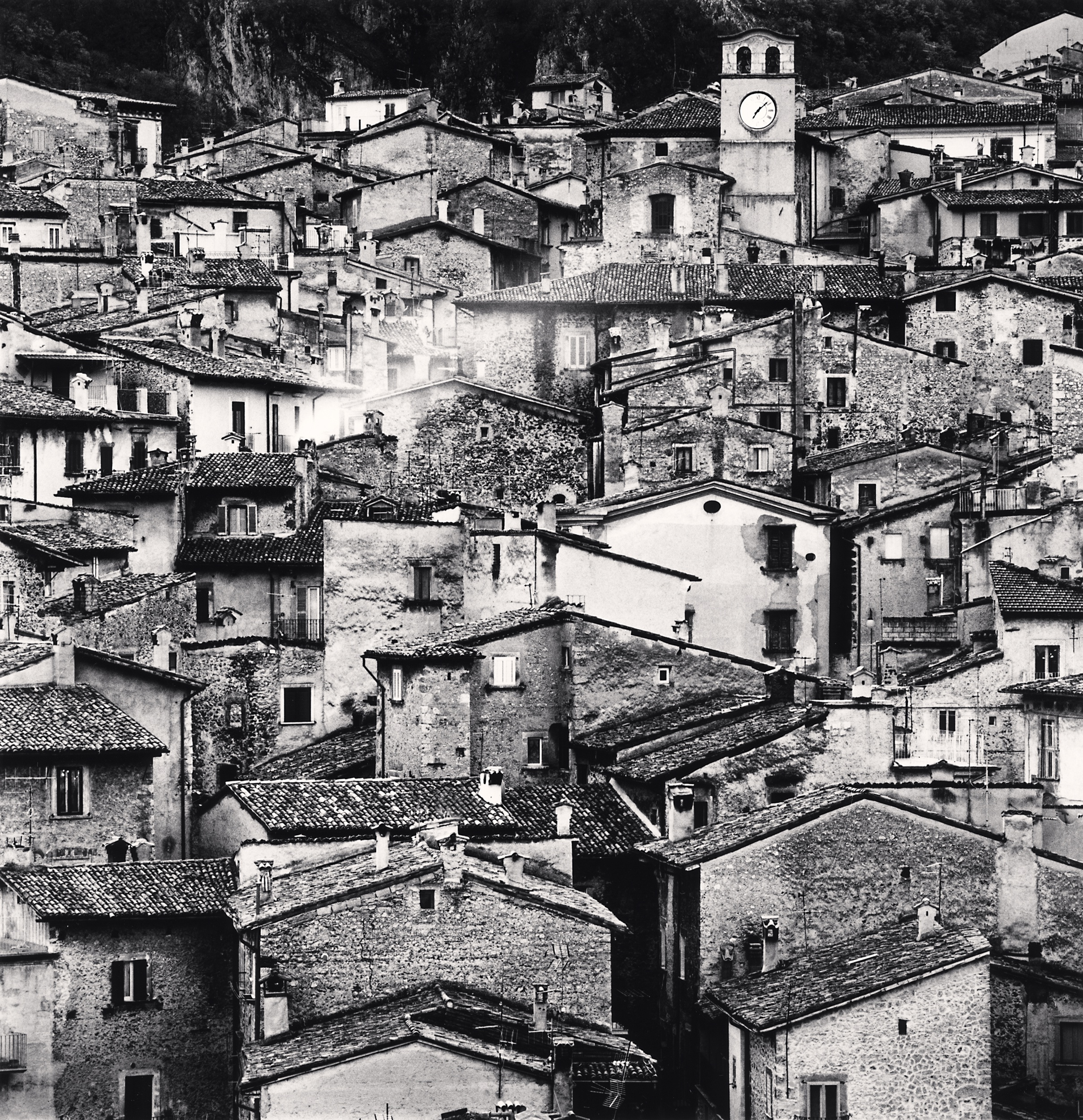
In the first of four articles tracing the career of Michael Kenna we hear Michael reflect on the work of Italian photographer Mario Giacomelli (1925-2000), whose work is widely regarded as some of the most original photography of the twentieth century. Giacomelli was born into poverty in Senigallia, a town on the Adriatic coast of Italy in 1925 where he taught himself to paint and write poetry; after buying his first camera in 1953, he photographed in his hometown for almost fifty years until his death in 2000. His work is known for its humanistic themes, raw and grainy style, and geometric abstraction. Some of his best-known works are from a series he created between 1961 and 1963 that capture the seminarians during a moment of play in the snow.
“A photograph isn’t only what you see, but also what your imagination adds to it. My own imagination may add something else, a third person’s something else again. But does it matter? What matters is the contact between us, the fact that we talk about trees losing their leaves, about objects we crush underfoot without realizing it, about that house dying gently, abandoned by its owner, even though it’s the house where he was born, where he learnt to cry and to laugh.” Mario Giacomelli
Michael Kenna | Reflections of Mario Giacomelli (1925-2000)
“As a young photographer, I studied the work of many other photographers, visited exhibitions and along the way become something of a collector. I often think the true test of any artwork is in its ability to retain interest over time. I own original prints of the two Mario Giacomelli works below. Both, in their own way, greatly appealed to me when I acquired them in the early 1980s. I have now lived with each of these prints on my walls for over forty years, and they continue to fascinate me every day.
I spent some time in my youth training to become a Catholic priest. Giacomelli’s series of seminarians therefore, which he made in 1961, four years before I was a seminarian, remind me of that long-lost time. Images can appeal for various reasons, including aesthetics, technique, conceptual challenge and/or personal narrative. The personal aspects are perhaps primary for me in this photograph, but the aesthetics are certainly not to be taken for granted. The graphics and composition, apparently simple, allow my eyes to wander around the picture without ever being tempted out of the frame. Details are sparse, the image is barely in focus, yet the four figures in their black cassocks each engage my eye before directing me to another part of the image. The aim of the snowball throw is out of the frame off to the left. The huddled figure on the right perfectly balances any tendency to follow that throw. This is a truly decisive moment, captured and recognized by Mario Giacomelli before he made the print, which itself seems quite straightforward and personable. There are some minor dents and surface imperfections which contribute to its uniqueness. It is an elegant and beautiful print which I feel proud and fortunate to live with.

Dancing Seminarians, Senigallia, Italy 1961 © Mario Giacomelli
Working with the same palette of strong blacks and contrasting white spaces, Giacomelli made many landscapes of which the one below is my favourite. He has reduced a three dimensional, highly detailed scene into a two-dimensional tapestry of abstract lines which fully engage my attention. I can look at this print from across the room or close up and be equally satisfied and inspired. Giacomelli pushed the boundaries of printmaking, often by tilting his easel, painting on his negatives and/or prints, and having selected areas out of focus or without details. I love that Giacomelli has used a marker to add windows and a doorway to the facade of the farmhouse in this print. I wouldn’t be surprised if some of the black lines in the fields have been enhanced by his marker also. His freedom to change, add or subtract from what was actually there is a breath of fresh air. Giacomelli demonstrated that mastering a technique gives one the right and freedom to creatively collaborate with the medium. He photographed in Scanno a great deal so I was delighted to visit the town in 2016 to pay homage to his strong influence on my own work.” Michael Kenna 2020

La Mia Terra, circa 1970 © Mario Giacomelli

Homage to Giacomelli, Scanno, Abruzzo, Italy 2016 © Michael Kenna
